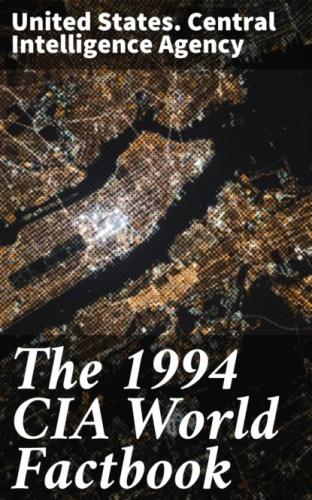Judicial branch:
Supreme Court (Cour Supreme)
Political parties and leaders:
Unity for National Progress (UPRONA); Burundi Democratic Front
(FRODEBU); Organization of the People of Burundi (RBP); Socialist
Party of Burundi (PSB); People's Reconciliation Party (PRP)
Other political or pressure groups:
opposition parties legalized in March 1992; Burundi African Alliance
for the Salvation (ABASA); Rally for Democracy and Economic and Social
Development (RADDES)
Member of:
ACCT, ACP, AfDB, CCC, CEEAC, CEPGL, ECA, FAO, G-77, GATT, IBRD, ICAO,
IDA, IFAD, IFC, ILO, IMF, INTELSAT (nonsignatory user), INTERPOL, ITU,
LORCS, NAM, OAU, UN, UNCTAD, UNESCO, UNIDO, UPU, WHO, WIPO, WMO, WTO
Diplomatic representation in US:
chief of mission:
Ambassador Jacques BACAMURWANKO, designated (January 1994)
chancery:
Suite 212, 2233 Wisconsin Avenue NW, Washington, DC 20007
telephone:
(202) 342–2574
US diplomatic representation:
chief of mission:
(vacant); Charge d'Affaires Leonard J. LANGE
embassy:
Avenue des Etats-Unis, Bujumbura
mailing address:
B. P. 34, 1720, Bujumbura
telephone:
[257] (223) 454
FAX:
[257] (222) 926
Flag:
divided by a white diagonal cross into red panels (top and bottom) and
green panels (hoist side and outer side) with a white disk
superimposed at the center bearing three red six-pointed stars
outlined in green arranged in a triangular design (one star above, two
stars below)
@Burundi, Economy
Overview:
A landlocked, resource-poor country in an early stage of economic
development, Burundi is predominately agricultural with only a few
basic industries. Its economic health depends on the coffee crop,
which accounts for 80% of foreign exchange earnings. The ability to
pay for imports therefore continues to rest largely on the vagaries of
the climate and the international coffee market. As part of its
economic reform agenda, launched in February 1991 with IMF and World
Bank support, Burundi is trying to diversify its agricultural exports
and attract foreign investment in industry. Several state-owned coffee
companies were privatized via public auction in September 1991.
National product:
GDP - purchasing power equivalent - $4.4 billion (1993 est.)
National product real growth rate:
−3.8% (1991)
National product per capita:
$700 (1993 est.)
Inflation rate (consumer prices):
4.7% (1992 est.)
Unemployment rate:
NA%
Budget:
revenues:
$318 million
expenditures:
$326 million, including capital expenditures of $150 million (1991
est.)
Exports:
$40.8 million (f.o.b., 1992 est.)
commodities:
coffee 81%, tea, cotton, hides, and skins
partners:
EC 57%, US 19%, Asia 1%
Imports:
$188 million (c.i.f., 1992 est.)
commodities:
capital goods 31%, petroleum products 15%, foodstuffs, consumer goods
partners:
EC 45%, Asia 29%, US 2%
External debt:
$970 million (1991)
Industrial production:
growth rate 11% (1991 est.); accounts for about 15% of GDP
Electricity:
capacity:
55,000 kW
production:
105 million kWh
consumption per capita:
20 kWh (1991)
Industries:
light consumer goods such as blankets, shoes, soap; assembly of
imported components; public works construction; food processing
Agriculture:
accounts for 50% of GDP; 90% of population dependent on subsistence
farming; marginally self-sufficient in food production; cash crops -
coffee, cotton, tea; food crops - corn, sorghum, sweet potatoes,
bananas, manioc; livestock - meat, milk, hides and skins
Economic aid:
recipient:
US commitments, including Ex-Im (FY70–89), $71 million; Western
(non-US) countries, ODA and OOF bilateral commitments (1970–89), $10.2
billion; OPEC bilateral aid (1979–89), $32 million; Communist
countries (1970–89), $175 million
Currency:
1 Burundi franc (FBu) = 100 centimes
Exchange rates:
Burundi francs (FBu) per US$1 - 247.94 (November 1993), 208.30 (1992),
181.51 (1991), 171.26 (1990), 158.67 (1989), 140.40 (1988)
Fiscal year:
calendar year
@Burundi, Communications
Highways:
total:
6,285 km
paved:
1,099 km
unpaved:
gravel, crushed stone 2,500 km; improved, unimproved earth 2,686 km
(1990)
Inland waterways:
Lake Tanganyika
Ports:
Bujumbura (lake port) connects to transportation systems of Tanzania
and Zaire
Airports:
total:
5
usable:
3
with permanent-surface runways:
1
